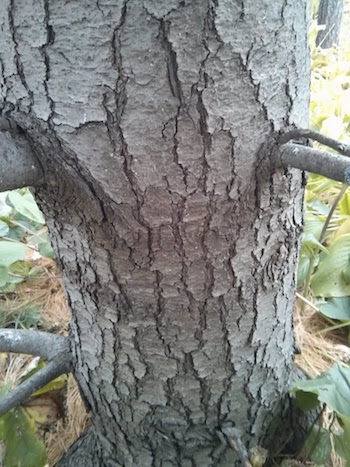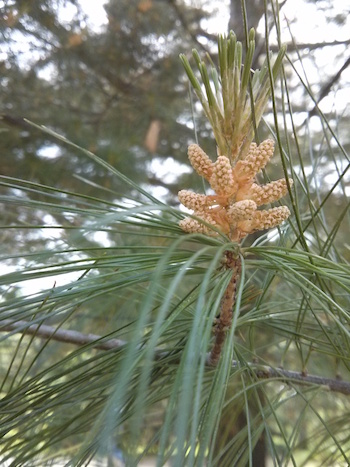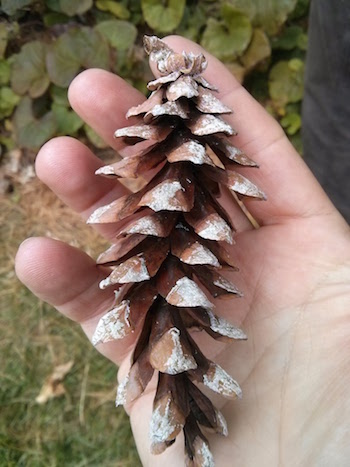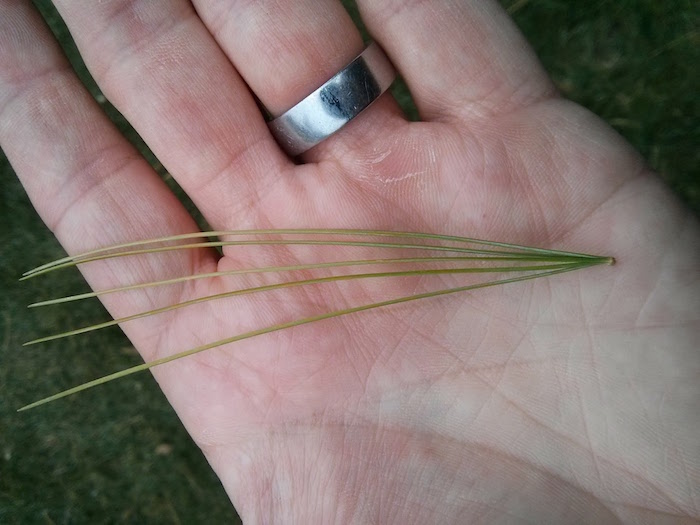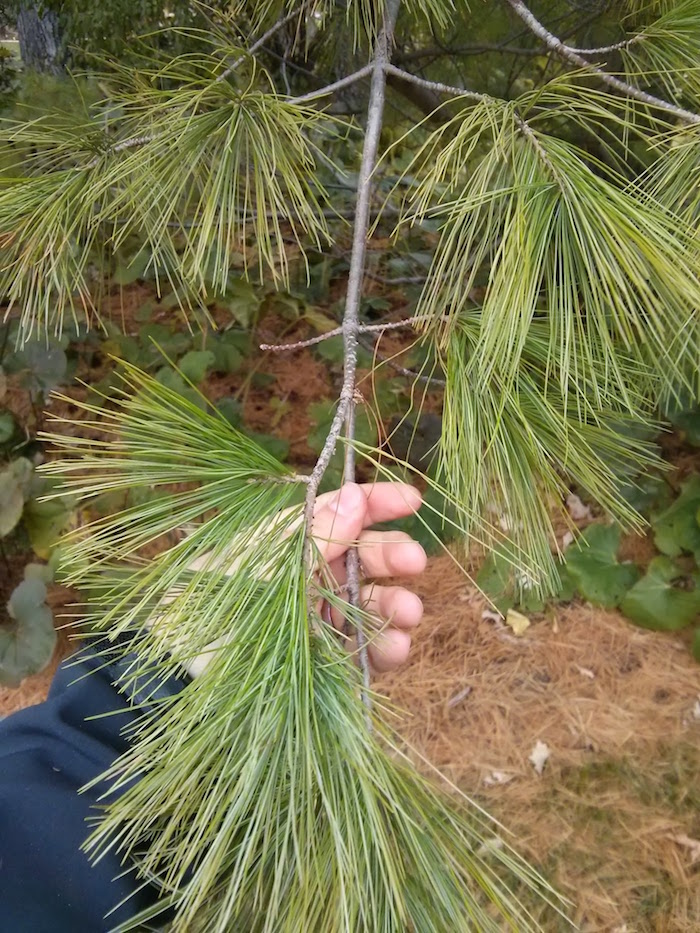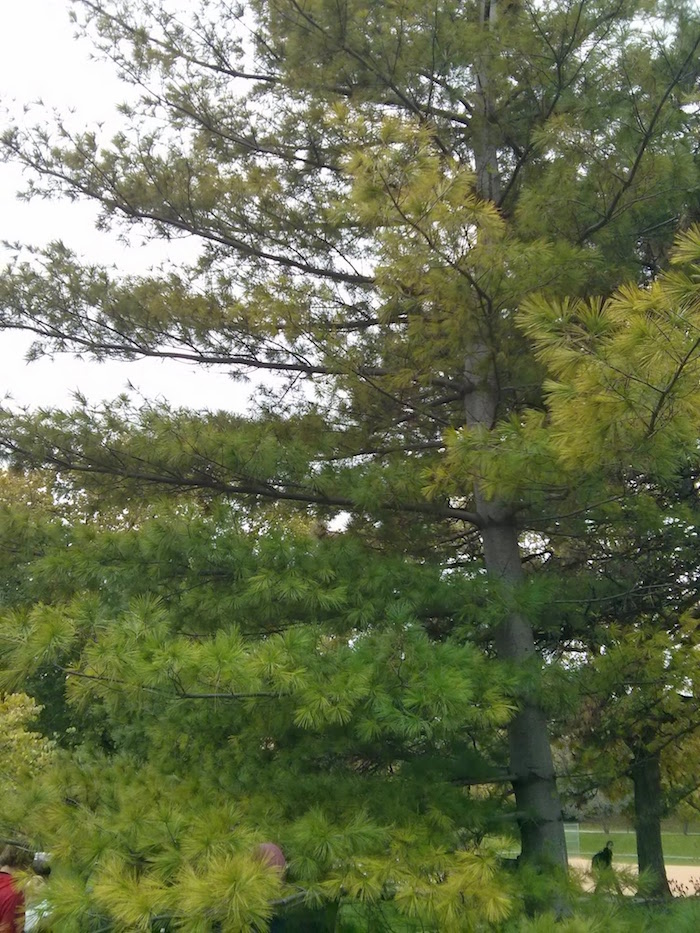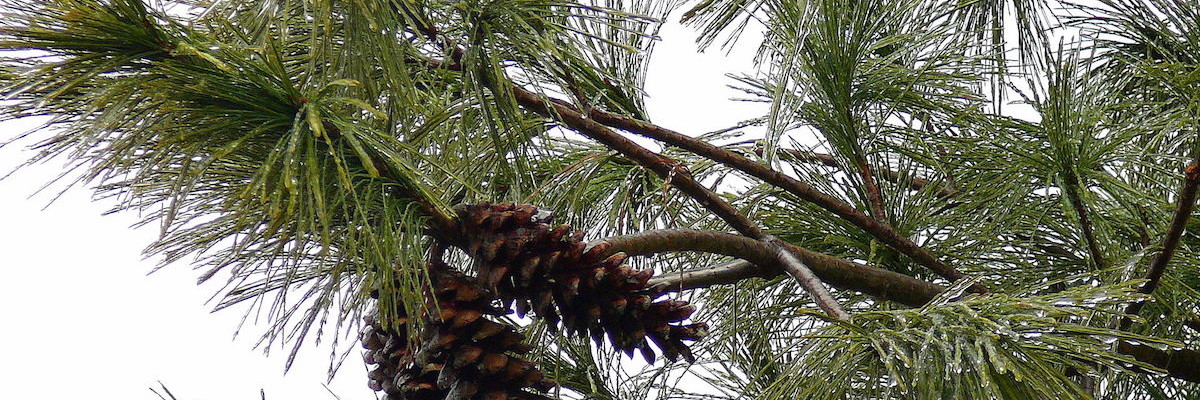
Description:
Eastern White Pine is the largest conifer species in the upper Midwest. Needles are in clusters of five, are soft, flexible, and 2.5-5” long. They are bluish green and grow off of cylindrical stems. Cones are 4-8” long and remain attached for several months after ripening in the fall. The bark is thick, smooth and greenish-brown on young trees, becoming deeply fissured and dark gray with age.
Eastern white pine is one of the major symbols of the Haudenosaunee Confederacy, also known as the Iroquois Confederacy. The species is known as the Great Peace Tree, with its five needles representing the unity of nations in the confederacy, and its broad branches representing shelter. The abundance of eastern white pine in the Upper Midwest facilitated westward expansion of European and American colonists and it became a major timber species in the area. Its wood is light and durable, and useful for lumber. During the American Revolutionary period, Eastern white pine was a popular species for ship masts. Fighting over access to Eastern white pine stands caused the “Pine Tree Riots” among American colonists, and helped lead to the war. The species is sometimes used as a Christmas tree, and has become a popular landscape tree due to its attractive needles and large stature. Eastern white pine is also the state tree of Michigan and Maine.
In 2011, the Minnesota Agricultural Experiment Station at the University of Minnesota helped develop ‘Patton’s Silver Splendor,’ a cultivar of eastern white pine that is resistant to White Pine Blister Rust. See below for more information.
Issues:
White Pine Blister Rust is a major fungal disease that has devastated native stands of eastern white pine. It is caused by the fungus Cronartium ribicola, which uses plants in the genus Ribes, such as gooseberry or currant, as an alternate host. The Forest Pathology Lab at the University of Minnesota, under Dr. Bob Blanchette has been researching WPBR for many years, and helped developed the resistant cultivar in 2011. Cankers and white pine weevils can also be major issues.
Other Resources:
Eloise Butler Wildflower Garden
UMN 'Patton's Silver Splendor'
